
FACULTY OF COMMUNICATION
Department of Cinema and Digital Media
CDM 380 | Course Introduction and Application Information
| Course Name |
Film and the City
|
|
Code
|
Semester
|
Theory
(hour/week) |
Application/Lab
(hour/week) |
Local Credits
|
ECTS
|
|
CDM 380
|
Fall/Spring
|
2
|
2
|
4
|
4
|
| Prerequisites |
None
|
|||||
| Course Language |
English
|
|||||
| Course Type |
Service Course
|
|||||
| Course Level |
First Cycle
|
|||||
| Mode of Delivery | face to face | |||||
| Teaching Methods and Techniques of the Course | - | |||||
| Course Coordinator | - | |||||
| Course Lecturer(s) | ||||||
| Assistant(s) | - | |||||
| Course Objectives | This course connects film studies and urban studies to introduce students to the parallel histories of film and the city. Cities have provided diverse settings for films and cinema has created an audio-visual archive to trace the transformation of urban life and landscape. The class will focus on films in which cities become protagonists rather than being simply backdrops. |
| Learning Outcomes |
The students who succeeded in this course;
|
| Course Description | This course reviews a series of films in the light of readings on cinema and the city. Evaluation will depend on one midterm exam and one final project. |
|
|
Core Courses | |
| Major Area Courses |
X
|
|
| Supportive Courses | ||
| Media and Management Skills Courses | ||
| Transferable Skill Courses |
WEEKLY SUBJECTS AND RELATED PREPARATION STUDIES
| Week | Subjects | Related Preparation |
| 1 | Introduction | |
| 2 | Parallel Histories: Cinema and the City | Barbara Mennel “Introduction: The founding myth of cinema’” in Cities and Cinema. Routledge. 2008. pp.1-17. Giuliana Bruno “Motion and Emotion: Film and the Urban Fabric” in A. Webber and E. Eds. Cities in Transition: The Moving Image and the Modern Metropolis. 2008. |
| 3 | The Modern Metropolis and its Imagination Berlin. Symphony for a Great City. Walther Ruttmann. 1927. Urban Impressions I: Walking in the City | Barbara Mennel “Modernity and the City Film: Berlin” in Cities and Cinema. 2008. pp. 21-45. Georg Simmel “The Metropolis and Mental Life” (1903) in G. Bridge & S. Watson, eds. The Blackwell City Reader. 2002, pp.324-339. Erica Stein. “Abstract Space, Microcosmic Narrative, and the Disavowal of Modernity in Berlin: Symphony of a Great City” Journal of Film and Video, Vol. 65, No. 4 (Winter 2013), pp. 3-16. |
| 4 | City Noir: Los Angeles Screening: David LynchFrom Weimar to Hollywood: Expressionism and Film Noir Double Indemnity, Billy Wilder, 1944. Naked City. Jules Dassin. 1948. Urban Impressions II: Psychogeography | Barbara Mennel “The dark city and film noir: Los Angeles” Cities and Cinema. Routledge. 2008. pp. 46-60. Frank Krutnick "Something More Than Night: Tales of the Noir City" in Cinematic City. D.B. Clarke. 1997. Karen O'Rourke “Psychogeography: A Purposeful Drift Through the City” MIT Press Reader, JUL 16, 2021 https://thereader.mitpress.mit.edu/psychogeography-a-purposeful-drift-through-the-city/ |
| 5 | Modernism, City and Film I: Alienation La notte. Michelangelo Antonioni. 1961. | Clara Orban “Antonioni's Women, Lost in the City” Modern Language Studies, Autumn, 2001, Vol. 31, No. 2 (Autumn, 2001), pp. 11-27. Frank P. Tomasulo. “The Architectonics of Alienation: Antonioni's Edifice Complex” WIDE ANGLE. Volume 15, Number 3 (July 1993) pp. 3-20. |
| 6 | Modernism, City and Film II: The flaneuse Cleo from 5 to 7. Agnes Varda. 1962. Vesikalı Yarim. Lütfi Ömer Akad. 1968. FINAL PROJECT DISCUSSION ROUND 1 | Janice Mouton “From Feminine Masquerade to Flâneuse: Agnès Varda's Cléo in the City” Cinema Journal, Winter 2001, Vol. 40, No. 2, pp. 3-16. Feride Çiçekoğlu. “Sabiha in »Public Istanbul«” Public Istanbul - Spaces and Spheres of the Urban. Ed. Frank Eckardt, Kathrin Wildner. 2008. Transcript Verlag. |
| 7 | Modernism, City and Film III: Ambivalence Play Time. Jacques Tati. 1967. | Laurent Marie “Jacques Tati’s Play Time as New Babylon” in Cinema and the City. Ed. M. Shiel and T. Fitzmaurice. Blackwell. 2004. Iain Borden. “Playtime: Tativille and Paris” in The Hieroglyphics of Space: Understanding the City. Ed. Neil Leach. 2001, pp.217-235. |
| 8 | VİZE | |
| 9 | Hong Kong Film industry and the city Chungking Express. Wong Kar-wai. 1994. FINAL PROJECT DISCUSSION ROUND 2 | Barbara Mennel “City film industry: Hong Kong” Cities and Cinema. Routledge. 2008. pp.83-102. Christoph Lindner “The Postmetropolis and Mental Life: Wong Kar-Wai's Cinematic Hong Kong” in The New Blackwell Companion to the City Ed. Gary Bridge, Sophie Watson. 2011. |
| 10 | Film and Urban Memory Wings of Desire, Wim Wenders, 1987. | Jonathan Bordo “The Homer of Potsdamerplatz—Walter Benjamin in Wim Wenders's Sky Over Berlin/Wings of Desire, a Critical Topography” Images. 2008. G. Pratt & R.M. San Juan “Remembering to forget to remember. The persistence of memory and the cinematic city” in Film and Urban Space. Critical Possibilities. 2014. |
| 11 | Representation of the Informal City Lagos / Koolhaas. Bregtje van der Haak. 2003. FINAL PROJECT DISCUSSION ROUND 3 | Tim Hecker “The Slum Pastoral: Helicopter Visuality and Koolhaas’s Lagos” Space and Culture 13(3) 256–269. |
| 12 | The Political Economy of the City Patrick Keiller. London (1994), from the Trilogy including also Robinson in Space (1997), Robinson in Ruins (2010). | James Ward “‘London Is All Waste’: Rubbish in Patrick Keiller's Robinson Films” SubStance, 2008, Vol. 37, No. 2, Issue 116 (Waste and Abundance: The Measure of Consumption). 2008, pp. 78-93. Patrick Keiller interview in The Guardian: https://www.theguardian.com/film/2012/nov/30/patrick-keiller-london-original-interview |
| 13 | Fragments of the City: Non-linear Narratives Istanbul Planet Galata (2011, Florian Thalhofer & Berke Baş) http://www.planetgalata.com | Aston, J. and Odorico, S. (2018) ‘Enacting polyphony: an interview with Florian Thalhofer’, Alphaville: Journal of Film and Screen Media, 15, pp. 106-112. Anna Wiehl “Database Aesthetics, modular storytelling, and the intimate small worlds of Korsakow documentaries” in NECSUS. European Journal of Media Studies. Jg.5, N.1, 2016, pp. 177-197. |
| 14 | FINAL PROJECT | |
| 15 | Semester Review | |
| 16 | Semester Review |
| Course Notes/Textbooks | |
| Suggested Readings/Materials |
EVALUATION SYSTEM
| Semester Activities | Number | Weigthing |
| Participation |
1
|
20
|
| Laboratory / Application | ||
| Field Work | ||
| Quizzes / Studio Critiques | ||
| Portfolio | ||
| Homework / Assignments | ||
| Presentation / Jury | ||
| Project |
1
|
40
|
| Seminar / Workshop | ||
| Oral Exams | ||
| Midterm |
1
|
40
|
| Final Exam | ||
| Total |
| Weighting of Semester Activities on the Final Grade |
100
|
|
| Weighting of End-of-Semester Activities on the Final Grade | ||
| Total |
ECTS / WORKLOAD TABLE
| Semester Activities | Number | Duration (Hours) | Workload |
|---|---|---|---|
| Theoretical Course Hours (Including exam week: 16 x total hours) |
16
|
4
|
64
|
| Laboratory / Application Hours (Including exam week: '.16.' x total hours) |
16
|
0
|
|
| Study Hours Out of Class |
13
|
2
|
26
|
| Field Work |
0
|
||
| Quizzes / Studio Critiques |
0
|
||
| Portfolio |
0
|
||
| Homework / Assignments |
0
|
||
| Presentation / Jury |
0
|
||
| Project |
1
|
30
|
30
|
| Seminar / Workshop |
0
|
||
| Oral Exam |
0
|
||
| Midterms |
1
|
30
|
30
|
| Final Exam |
0
|
||
| Total |
150
|
COURSE LEARNING OUTCOMES AND PROGRAM QUALIFICATIONS RELATIONSHIP
|
#
|
Program Competencies/Outcomes |
* Contribution Level
|
||||
|
1
|
2
|
3
|
4
|
5
|
||
| 1 | To be able to have fundamental knowledge about narrative forms in cinema, digital and interactive media, and the foundational concepts relevant to these forms. |
X | ||||
| 2 | To be able to create narratives based on creative and critical thinking skills, by using the forms and tools of expression specific to cinema and digital media arts. |
X | ||||
| 3 | To be able to use the technical equipment and software required for becoming a specialist/expert in cinema and digital media. |
X | ||||
| 4 | To be able to perform skills such as scriptwriting, production planning, use of the camera, sound recording, lighting and editing, at the basic level necessary for pre-production, production and post-production phases of an audio-visual work; and to perform at least one of them at an advanced level. |
X | ||||
| 5 | To be able to discuss how meaning is made in cinema and digital media; how economy, politics and culture affect regimes of representation; and how processes of production, consumption, distribution and meaning-making shape narratives. |
|||||
| 6 | To be able to perform the special technical and aesthetic skills at the basic level necessary to create digital media narratives in the fields of interactive film, video installation, experimental cinema and virtual reality. |
|||||
| 7 | To be able to critically analyze a film or digital media artwork from technical, intellectual and artistic perspectives. |
X | ||||
| 8 | To be able to participate in the production of a film or digital media artwork as a member or leader of a team, following the principles of work safety and norms of ethical behavior. |
|||||
| 9 | To be able to stay informed about global scientific, social, economic, cultural, political, institutional and industrial developments. |
|||||
| 10 | To be able to develop solutions to legal, scientific and professional problems surrounding the field of cinema and digital media. |
|||||
| 11 | To be able to use a foreign language to communicate with colleagues and collect data in the field of cinema and digital media. ("European Language Portfolio Global Scale", Level B1). |
X | ||||
| 12 | To be able to use a second foreign language at the medium level. |
|||||
| 13 | To be able to connect the knowledge accumulated throughout human history to the field of expertise. |
|||||
*1 Lowest, 2 Low, 3 Average, 4 High, 5 Highest
NEWS |ALL NEWS
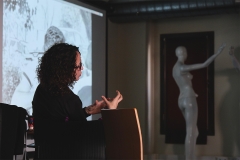
"Working with Found Footage" Workshop Organized with Zeyno Pekünlü
Artist, director, activist and academician Zeyno Pekünlü was the guest of CDM232: Digital Film Studio II.
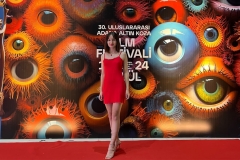
CDM senior year student Ecem has been selected to the Animation category at Adana Altın Koza Film Festival
CDM 4th-grade student Ecem Çörtle has been selected as a finalist in the National Student Films category of the 30th International Adana
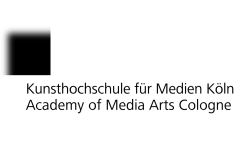
CDM graduate Eylül Berivan Kızılırmak has been accepted to the Cologne Academy of Media Arts
CDM graduate Eylül Berivan Kızılırmak has been accepted to the master's program at the Academy of Media Arts Cologne (Kunsthochschule für Medien Köln).
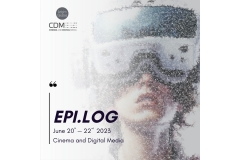
Traditionalistic CDM End of Year Exhibition EPI.LOG took place in FC Studios
Cinema and Digital Media End of Year Exhibition EPI.LOG 2023, organized as part of IUE Faculty of Communication Exhibition "FC-EX 2023", was
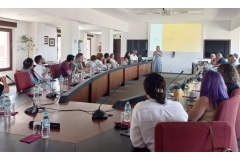
IUE Faculty of Communication Advisory Board members visited our Faculty and Studios on June 22, 2023
IUE Faculty of Communication Advisory Board members Andreas Treske, Ayşe Matay, Barbaros Görgü, Dilek Gappi, Elif Demirci İşleğen, Emine Uysal Berger, Murat
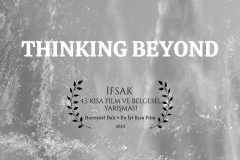
Ataberk awarded at the İFSAK 43rd National Short Film and Documentary Competition
Our third-year student, Ataberk Eyolcu, returned from the 43rd National Short Film and Documentary Competition of İFSAK (Istanbul Photography and Cinema Amateurs
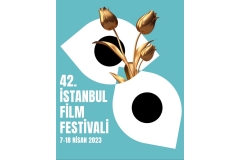
Our third-year CDM student Fikret Başar Kaya was at the 42nd Istanbul Film Festival
Our third year CDM student Fikret Başar Kaya participated as a Young Jury at the 42nd Istanbul Film Festival held on April
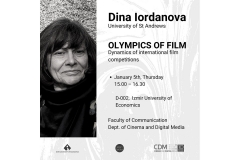
CDM hosted Dina Iordanova
Prof. Dina Iordanova gave a speech titled Olympics of Film: Dynamics of international film competitions on Thursday, January 5, 2023, in D002 at Izmir

